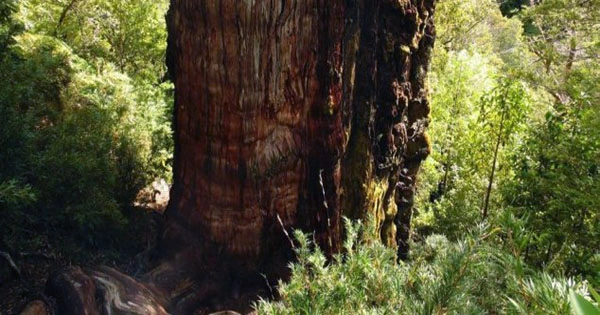An ancient Patagonian cypress in Chile’s Alerce Costero national park may have just snatched the title of world’s oldest tree. The huge tree – the Alerce Milenario, also known as “Great-Grandpa” – is thought to be approximately 5,400 years old, according to preliminary estimates. If real, it would dethrone the existing “world’s oldest tree,” a 4,853-year-old eastern Californian bristlecone pine known as Methuselah.
The tree is a Patagonian cypress (Fitzroya cupressoides), a conifer endemic to Chile and Argentina that is known as the “redwood of the south” for its massive size and ability to withstand the forces of nature. The species is regarded to be the biggest kind of tree in South America, with a trunk diameter of up to 5 meters (16 feet) and a height of 70 meters (229 ft). Unfortunately, because to widespread logging and tourism in the region, it is currently considered Chile’s most endangered conifer.
The scientist who just conducted the age calculation of the giant Patagonian cypress residing in the depths of Alerce Costero national park is Dr Jonathan Barichivich of the Climate and Environmental Sciences Laboratory in Paris. He came at this conclusion after taking a core sample from Alerce Milenario in early 2020 with a customized t-shaped drill that didn’t damage the tree’s trunk. A one-year cycle is exhibited by light pale wood that grew at the start of the year and dark wood that grew at the end of the year, making it easy to determine a tree’s age by counting the number of rings in a cross-sectioned trunk.
However, owing to the tree’s massive girth, he couldn’t drill a core all the way through, thus the rest of the rings had to be “filled in” using statistical modeling based on the trees’ growth rate, environmental conditions, and random variation. “The issue is that determining the age of such a large tree using standard methods such as counting the yearly rings is impossible. There is no equipment long enough to retrieve a sample from the tree’s core, and even if we did, the interior section of the trunk may be rotting. Despite these methodological constraints, the scientific challenge to solve is how to assess the age of the tree “IFLScience spoke with Barichivich.
Using this ingenious approach, Barichivich calculated the tree’s age to be 5,484 years old. “As a consequence, there is 80 percent statistical confidence that the tree is older than 5,000 years,” Barichivich continued, “with a most likely age of roughly 5,484 years.” Dr. Barichivich has given talks on his discoveries at scientific conferences (see video above), but has yet to submit a peer-reviewed paper on the subject. While he plans to submit a manuscript to a publication in the future months, many scientists will likely hold off on calling the Guinness World Records hotline until the whole study is published.
Barichivich appears to be convinced that he has covered all of the areas and that his research will withstand criticism. However, he does not consider the label of “world’s oldest tree” to be particularly significant. The tree was found by Barichivich’s grandpa in the 1970s, and several generations of his family have served as rangers in the Alerce Costero national park. They’ve seen as human activity has wreaked havoc on this once-pristine ecology over the last few decades.
He intends to underline the urgent need to safeguard this unique, yet fast changing, ecosystem via his continuous work. “My tree is a descendant of my ancestors. Our ancestors’ tale as ‘Guardians of the Alerces’ is inextricably linked to this tree and the woodland in which it thrives “Dr. Barichivich added. “To me, this research isn’t about breaking age records; it’s about raising awareness about the need of protecting the tree from uncontrolled tourism.”
















